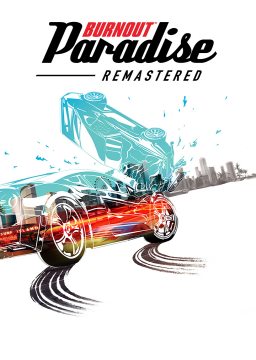Introduction
Hey everyone! This guide is for people new to Time Road Rules to learn how they're run, starting with basic info, then explaining a few meta things, showing tutorials on the maneuvers used in normal Road Rules, listing the most common routes, giving a few tips, and ending by describing the glitches used in Any Glitch runs.
Unless otherwise noted, everything said here applies universally (platform, version, etc. aren't relevant), and everything works the same in the original game as in Remastered.
Basic premise
The goal of Road Rules is, of course, to get faster times. Unlike in most racing games, however, very little value is placed on finding the apex or even cornering at all. Instead, there are two phases to a Road Rule:
- Gaining as much speed as possible by going down either N. Rouse or N. Mountain and S. Mountain.
- Maintaining the speed gained from the downhill phase until the target road is reached.
Only a few vehicles are usable for the downhill phase. Most are capped to 200 mph or lower, and most of the ones that breach that limit don't get very far, but there are a handful of cars that can reach 250 mph before hitting engine limits. These include the Annihilator and Annihilator Phoenix, Citizen and Civilian, Hippy Van, and Firehawk GP Competition. The fastest vehicle, however, is the Annihilator Street Rod, which hits its engine limit at around 340 mph. This guide relates specifically to the Street Rod from here on out.
The speed maintenance phase is the hard part. Driving straight without doing anything will cause a gradual loss of speed, turning will hasten that loss, and boost does nothing to stop it. The decline can only be stopped by drifting, which will be discussed at length in a later section.
Because the downhill phase is relatively simple, the focus will mostly be on maintaining speed. Most of the downhill gains come from a boatload of specific lines and maneuvers on a ~1-minute run-up, so your best bet for improvement is to watch videos of the fastest runs with full run-ups and mimic their lines. Outside that, the tips section has some general info that may be helpful.
Exceptions
There are only two real cases where the Street Rod isn't king. The first is Uphill Drive, where using the PCPD Special and taking Uphill Steps circumvents the actual road you'd have to drive normally. The other case is the roads that can be done below the 2 second limit, including Griffin and possibly Nakamura and Glover. On roads such as Hall, Rack, and Schembri, some cars come relatively close to challenging the Street Rod, but they don't quite get there.
Removing traffic
No traffic is pretty much a requirement for practicing. On PC, there's a dedicated Traffic Toggle mod available via BPR Modder; otherwise, a glitch is required. All no traffic glitches require online and another player. The usual method is as follows:
- One player joins an online session hosted by the other.
- The host selects and launches a Cops and Robbers game.
- The host kicks the player during the game.
- The player creates a new online session and enters Showtime.
All players in the new session will now have no traffic, including the host (once they leave Showtime). If a player is kicked or the host leaves, said player can create their own session and enter Showtime to transfer the glitch to the new session.
Main strats
Chaindrifting

Chaindrifting, as you might expect, is chaining drifts together back-to-back. It can take a bit to get the timing down, but it's a very simple action: brake+left, brake+right, rinse and repeat. The reason we do this is, as mentioned before, drifting maintains the speed of the car. Even with the car slowing slightly every time the brakes are pressed, it's still fast enough to make it worthwhile, especially on long runs. The video above shows the difference in speed by the time 7th ends.
Double drifting


Double drifting is an evolution of chaindrifting that takes advantage of the fact that vehicles gain speed during the exit of a drift and don't lose speed when entering one unless braking. Directly after starting a drift, briefly turn in the opposite direction of the drift without braking. The drift will be extended slightly, and the car will gain a small amount of speed. This movement is especially helpful at higher speeds (beyond engine limits), while at lower speeds it allows the downhill speed to be maintained almost indefinitely.
In the comparison above, note how the double drift run starts higher but is still able to keep more speed (6 mph higher at the start but 8 mph higher at the end). Normally, higher speeds slow down more quickly, not less. Over time, this advantage can make a significant difference.
Flicking

Flicking (sometimes called boost drifting) is an old tactic that's seen a lot more use in recent years. It basically does the same thing as double drifting—that is, it abuses the speed gained upon exiting a drift—but at a much more impactful level. It involves turning sharply (sharper than is necessary for the turn you're on) and abruptly turning in the opposite direction to have an extended exit with a large speed gain. This is usually done near the middle of a turn on a downhill.
Common routes

This section gives a brief overview of the typical routes for each road. Use the image above as a road name reference if needed.
N. Rouse, Lawrence, 7th, E. Crawford, W. Crawford

By turning right from Lawrence onto Lambert, Parr and I-88 Section 3 are doable. Going through Gabriel and onto S. Bay is the best way to Hall. Other roads accessible this way are done faster on other routes.
Turning onto Franke from 7th leads to the fastest routes for many roads. Evans and Fry are directly accessible, while turning onto 3rd and immediately into the mall is the route for Andersen. Continuing into 2nd and turning onto Glancey is the route for 9th, from which Patterson, Hudson, Moore, and Sullivan can be done.
From E. Crawford, you can hit Nakamura and continue onto 9th, from which Hawley and Glancey can be done.
Read is done from the N. Mountain run-up.
N. Rouse, S. Rouse, I-88 Section 3, Lambert

I-88 Section 4 is best done on this route. From Lambert you can do 1st, 5th/Riverside, and Newton directly. Via 1st, you can do Angus, which itself leads to the best 3rd and Watt routes. By staying on Lambert until 7th, you can also go back up Lawrence to do Ross or an uphill N. Rouse run. From Ross, you can do Cannon and W. Lake. From an uphill N. Rouse run, you can do Lewis.
Lambert also allows access to Hubbard, which in turn has access to 2nd. Turning onto S. Rouse is the way to Rack. Staying on Hubbard is the route for Manners, E. Lake, and Nelson. Chubb is also doable but has its own route as well (Read, railroad, Lewis, Nelson, Chubb). Rack has an alternate route similar to Chubb's that goes through Cannon (via shortcut) and E. Lake.
N. Rouse, S. Rouse, Hubbard, I-88 Section 3/2/1, Webster, Harber

Going up one of the exit ramps in the tunnel brings you onto Webster and quickly onto Harber. From here, you can turn onto King and do 4th and the Keys Bridge as well. All island roads are accessible from here with varying degrees of difficulty.
N. Mountain, S. Mountain, S. Bay, Warren, Hamilton

Turning onto Hans after N. Mountain is the path to the Geldard and S. Mountain routes. S. Mountain opens up routes to Lucas and, if you can maintain enough speed, Schembri. By going from N. Mountain to S. Mountain and not getting on S. Bay, you can do Casey.
From S. Bay, Gabriel and Shepherd are available. By going through the shortcut instead of Warren, this is also the best way to do Root and Webster. Going through the shortcut onto Fry is how Paradise is done.
From Hamilton, you can do Young. Further up, you can turn onto 9th and do Hawley and Glancey (as an alternative to the Nakamura route).
Pitt, Daniell, Shires, Keys Bridge (loop)

Dubbed the island speed circle.
This isn't the fastest route for most island roads anymore, but it's been in use for a long time and is convenient for practice runs.
Tips
Damaged cars are faster
Damaged vehicles are faster than undamaged ones. This holds true even outside Road Rules, and it applies to any car, even the Cavalry. Drive headlong into a wall, get a driveaway, and when you come back to whatever you were doing, you'll be a bit faster than before. Road Rulers have even gone as far as to mod their damage to the maximum value for better times.
The effects of damage aren't entirely understood. Strats such as wall grinding get a clear speed improvement and vehicles are less likely to get hung up on curbs, among other things. The technical reasons for it being better have been speculated on extensively, but thus far nobody's been able to confirm what's going on, so for now just know that damage=better.
Wall grinding and downhill drifting
In a lot of videos, you'll see Road Rulers grinding the walls and drifting down certain downhill sections instead of going straight down. Depending on the slope, the damage of the car, and the speed of the car, it can be much faster to do these than just driving down. Over time, grinding has been replaced by drifting in a lot of places, especially with the advent of flicking. Be on the lookout for these strats in videos.
Another reason for drifting is that it effectively bypasses the engine limits of a vehicle. At some point, you'll begin hitting that wall and need to do this to speed up. Beyond the engine limit, drifts start to "resist" a bit and the car handles strangely, but with practice it's manageable. The game is doing all it can to slow the car at that point, so grinding is off the table and drifts need to be maintained at all times.
Avoid curbs
Whenever possible, avoid hitting curbs. They can cause the car to "spark" (bottom out) and lose a ton of speed. In some cases, they can even wreck the car. It's not always possible to avoid them, but being wary of them is a good habit to get into.
Avoid airtime
Any airtime will slow the car down a bit, with a few exceptions such as dropping down on Lawrence. Like with curbs, there are some areas where airtime isn't avoidable. You can mitigate its effects by drift jumping, but there's always at least a small penalty for getting air.
Glitches
There are a few glitches useful for Any Glitch submissions. The main ones are as follows:
- Reversing glitch: Using the Revenge Racer, do a jump in reverse, then switch from brake to throttle in midair as if you plan to go forward. The car will begin reversing with no speed limiter in place and will remain this way until the throttle is released. The video below shows an easy way to practice without having to worry too much about the transition. Timing is key here.
- Stunt Run cancel glitch: Only works on Remastered PS4, XB1, and PC. Start an offline Stunt Run, then cancel it after the intro graphics but before taking control of the car (you can spam right on the D-pad to do this quickly). The donut AI vehicle attributes will remain active, giving you a 7000 kg car with near-instant turning, 700 hp, 20% higher top speed, and 10% higher top boost speed. Boost will also stop refilling.
- Wreck evasion glitch: Requires online. While offline, drive into a traffic vehicle such that the slow motion camera is triggered. Pause the game before touching the traffic and navigate to Freeburn Online. Whether a room is joined or not, the traffic will disappear; with luck, you'll be going at least 50 mph faster than before. This can be done with anything that triggers a slow-motion camera, not just traffic, and I've even seen people land on their roof and slide down the Lawrence tunnel using this glitch. [ Video: @JAVAP5 ]
- Temple boost/tempo glitch: Requires online and another player. Two players drive one behind the other. On a turn, they abuse lag such that the player behind sees themselves exchange places with the player in front, but the player in front is actually still in front of the player behind. As the positional difference is corrected, the player behind is continually shunted by the player in front, causing a speed increase. Ideally, neither has to slow down for this to happen. [ Video: @oleg_aka_djmeg ]
These glitches take creativity to use effectively and practice to master but they're generally straightforward, so they aren't covered any further in this guide.
Conclusion
To recap, Road Rules are done in the Annihilator Street Rod because it's the one vehicle capable of sustaining the 300+ mph speeds gained from going downhill. By chaindrifting and double drifting, that speed can be maintained throughout the four or five routes that cover almost all roads in the game. There are various route permutations best learned by watching videos with full run-ups and vehicle damage has a significant impact on the results of those permutations. Glitches are also available for those who want to try them.
If you have questions, come join the Discord server. Feedback is also welcome, especially from experienced Road Rulers.
Happy running!
I'm currently moving all the online challenges from the levels section to the leaderboards section so that you may place all the other players names with your submitted runs. This will take some time as I'm moving them over one run at a time. The leaderboards will be its new home so please submit yo







